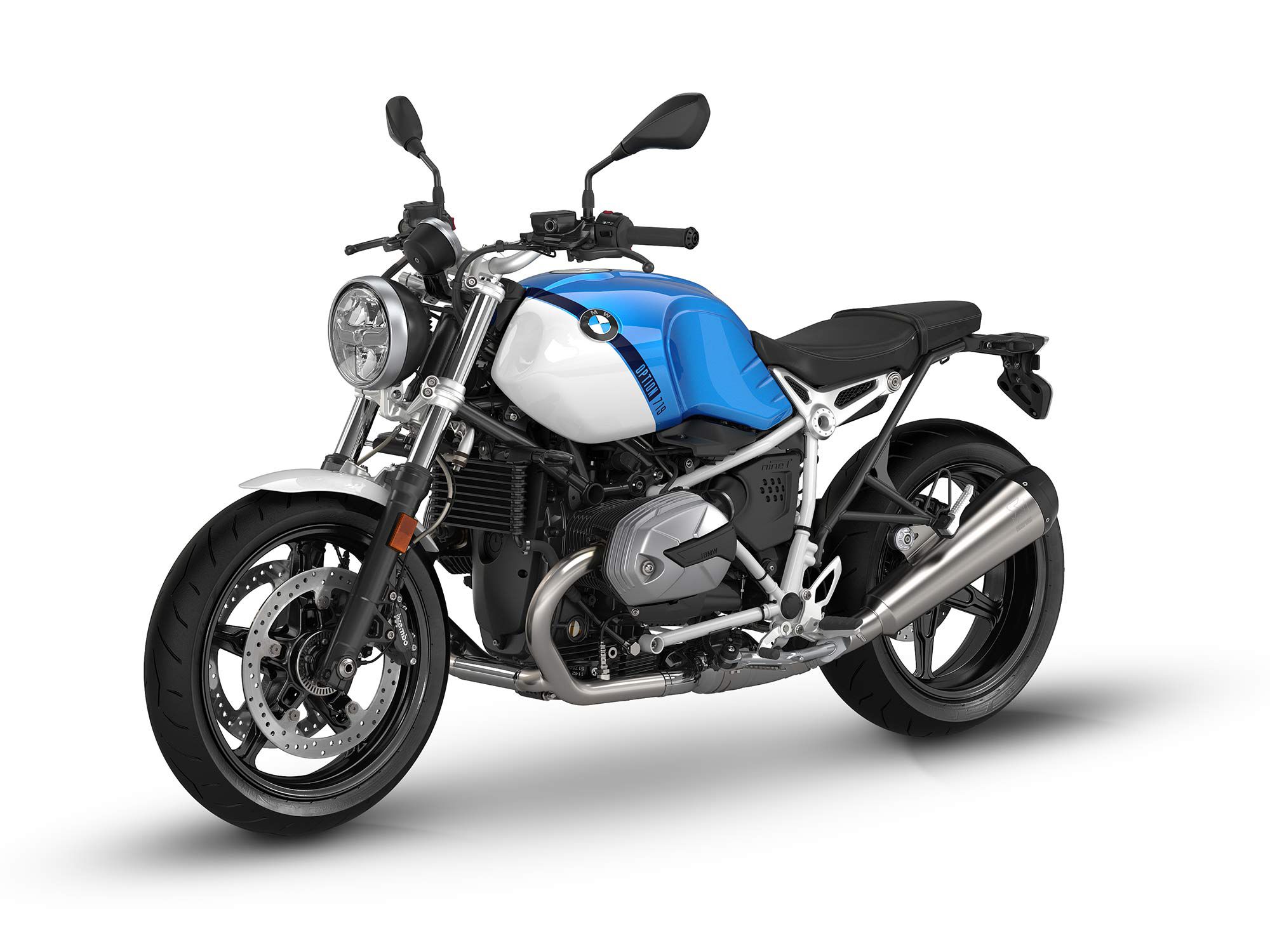
Ups
- New Euro 5 cylinder heads produce better low-midrange torque
- Electronic rider aids standard across all models
- Updated rear shock
Downs
- No tachometer or gear indicator on Pure model
- Seat uncomfortable on longer rides
- Front suspension a bit soft
Verdict
Subtle engine updates and LED lighting, coupled with stylish Option 719 packages, make the original BMW Heritage model and its Pure version offshoot more desirable than ever.
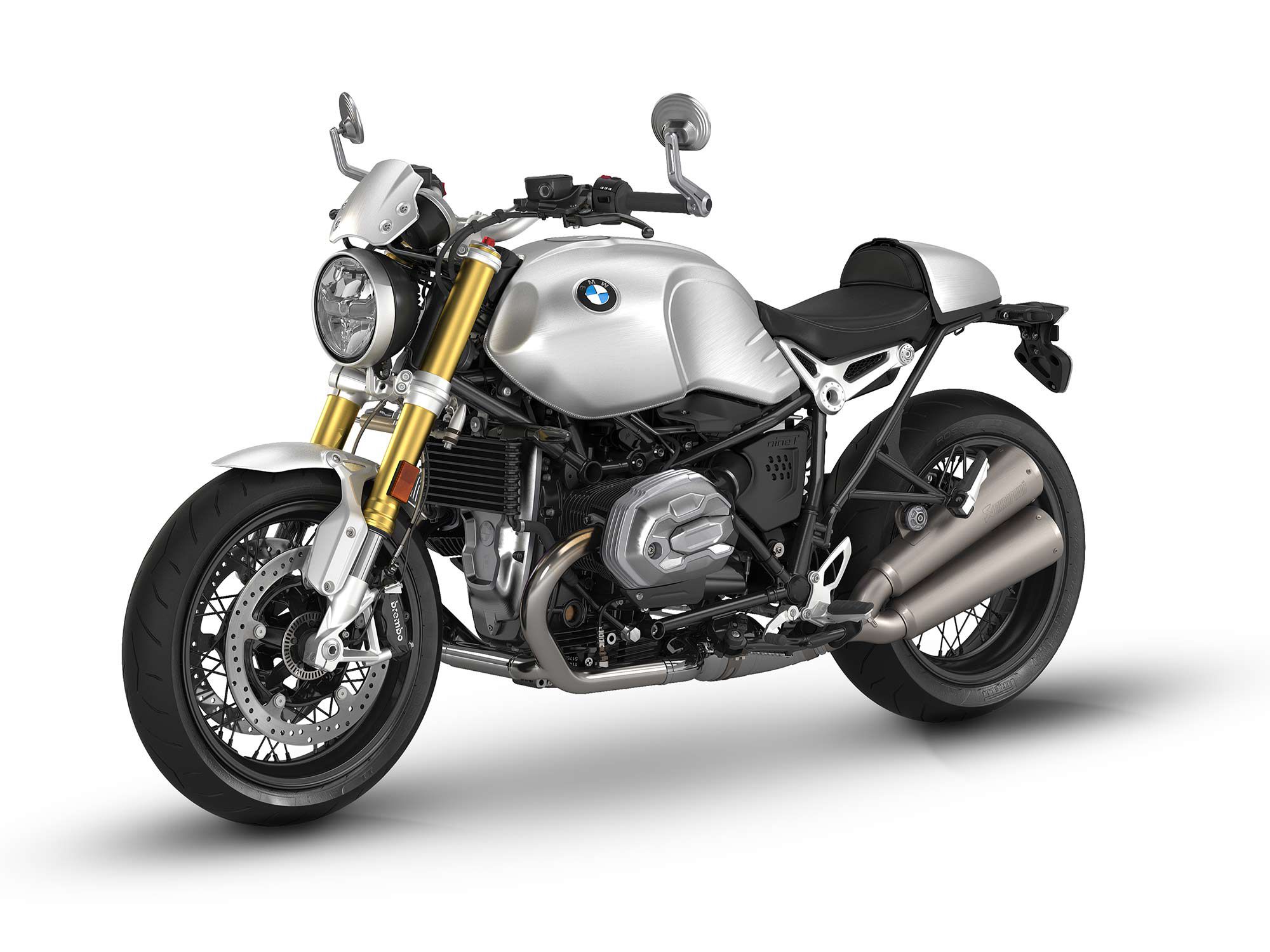
Overview
When it debuted in 2014, the R nineT was the right model at the right time for BMW. Leveraging the brand’s long history steeped in tradition and racing, the back-to-basics boxer proved to be a hit with the burgeoning cafe racer/retro-classic bike market. Instead of the newest “wethead” (liquid-cooled) boxer engine, the R nineT uses the previous-gen air/oil-cooled unit that has a more traditional look, along with a fuel tank shaped similarly to the original sporty R90 boxers of ‘70s, and classic round headlight/taillight. The R nineT has become popular enough that it has since been spun off into three other models, the Pure, Urban G/S, and Scrambler. The Pure model is a bare-bones, less expensive version of the R nineT, with a conventional 43mm fork and axial-mount Brembo front brake calipers (versus the standard R nineT’s inverted 46mm fork and radial-mount Brembo calipers), and a conventional 2-into-2 exhaust replacing the standard R nineT’s stylish twin stainless steel muffler.
Updates for 2022
The entire R nineT lineup received numerous subtle upgrades for 2021, but remains the same for 2022. In order to comply with stricter Euro 5 emissions regs, new cylinder heads with improved combustion not only run cleaner, but also boost low-midrange power. The cylinder head covers and round analog speedometer have been restyled, a USB charging port for your phone is now standard, and all lighting is handled by LED units. A new rear shock with travel-dependent damping is also equipped with a handwheel spring preload adjuster. Electronics have been upgraded, with Road and Rain ride modes now available, in addition to ABS Pro (cornering ABS) and Dynamic Brake Control (DBC, adjustable engine-braking). Available colorways for the R nineT are Black Storm Metallic, Option 719 Night Matte Black/Aluminum Matte, Option 719 Mineral White Metallic/Aurum, and Option 719 Aluminum. The R nineT Pure is available in Teal Blue Metallic Matte, Mineral Gray Metallic, Option 719 Black Storm Metallic/Racing Red, and Option 719 Cosmic Blue Metallic/Light White.
Pricing and Variants
The base-model R nineT retails for $15,995, with the Option 719 Aluminum Matte paint running an additional $1,000, the Option 719 Mineral White Metallic/Aurum motif costing $1,100, and the Option 719 Night Matte Black/Aluminum Matte colorway adding $1,100 to the base cost. The $1,000 Select Package includes Dynamic Traction Control, adaptive headlight, Dynamic Engine Brake Control, heated grips, cruise control, and Ride Modes Pro. Then there are four different Option 719 Billet Packs (ranging in price from $1,000–$1,200) with various CNC-machined billet aluminum styling components, plus a Classic Spoked Wheel (tubeless design) or Sport cast aluminum wheel option for $450.
The R nineT Pure base model has an MSRP of $10,995, with the Teal Blue Metallic Matte paint running you an extra $250, with three Option 719 liveries available: the Black Storm Metallic/Racing Red or Cosmic Blue Metallic/Light White will add $590, while the Aluminum Matte (all aluminum parts are hand-brushed with a matte clear coat finish) costs $1,550 extra. The same Option 719 Billet Packs are available ($1,000-$1,200), as is the Select Package ($1,000). The Classic Spoked Wheel ($950) or Sport cast aluminum wheel ($500) options are available, plus a standard Spoked Wheel that must use tubed tires ($500). There are also a couple of brushed aluminum fuel tank design options, one with sanded welds ($1,300) or one with visible welds ($1,000).
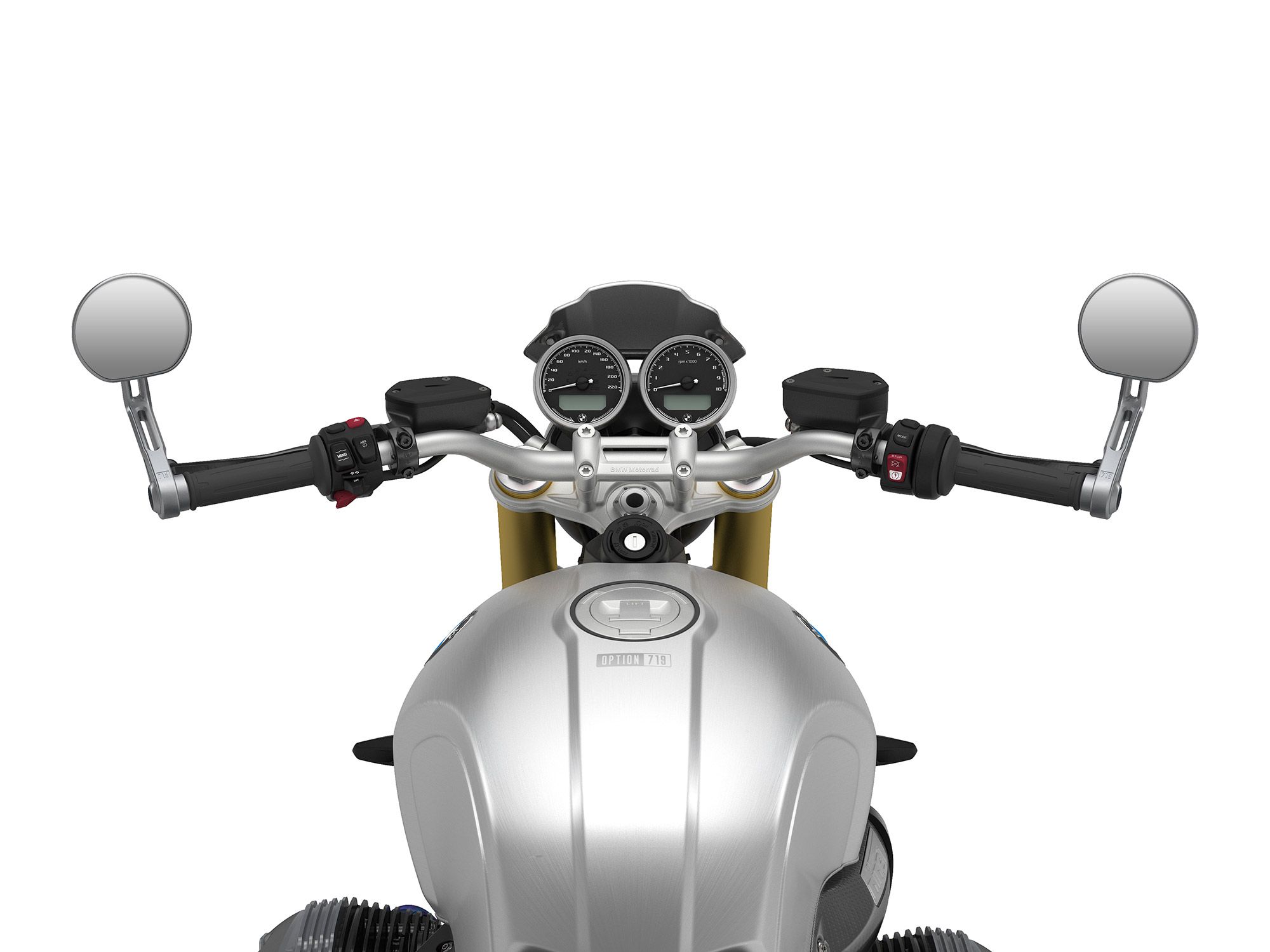
Competition
Competitors for the R nineT and R nineT Pure model include the myriad editions of the Ducati Scrambler: 1100, 1100 Tribute Pro, 1100 Pro/Sport Pro, Icon/Icon Dark, Café Racer, Nightshift, and Full Throttle. Triumph’s Street Scrambler, Scrambler 1200 XC, Bonneville T100/T120, Speed Twin, and Thruxton RS are also competitors, as are Moto Guzzi’s V9 Roamer and V9 Bobber
Powertrain: Engine, Transmission, and Performance
Utilizing the previous-generation air/oil-cooled 1,170cc opposed-twin boxer engine with updated cylinder heads for improved combustion in order to pass stricter Euro 5 emissions regs, BMW is claiming 109 hp at 7,250 rpm with 85 pound-feet of torque at 6,000 rpm for the newest R nineT. This is 1 hp down on the prior version, but BMW is claiming a marked increase in midrange power with peak power occurring 500 rpm sooner than the old version. You can check out a comparison of the previous R nineT model with the Honda CB1100, Indian Scout, and Moto Guzzi Griso here.
Handling
Both the R nineT and R nineT Pure perform well once the pavement turns twisty. “The suspension [is] a nice balance between supportive and stiff, and the chassis feels better the harder you push it,” Bradley Adams said about the R nineT’s handling in the aforementioned comparison test. Despite its more budget-conscious conventional 43mm fork (versus the R nineT’s beefier inverted 46mm fork), the R nineT Pure was surprisingly competent in the turns, with Kent Kunitsugu stating in his First Ride Review story, “…the nonadjustable 43mm conventional fork and single shock with rebound damping and spring preload adjustability do a good job of soaking up nasty urban pavement while keeping the chassis under control. Granted, we didn’t exactly run through any canyon roads at a heated pace during our half-day ride, but the few twisty portions of road we did encounter were attacked with zeal, and we met with no issues.”
Brakes
Both the R nineT and R nineT Pure feature a pair of four-piston Brembo calipers biting on 320mm discs, with the R nineT’s calipers using a radial-mount setup. A two-piston sliding-pin caliper and 264mm disc handle rear brake duties. Both bikes demonstrate excellent braking capabilities.
Fuel Economy and Real-World MPG
There are no mile-per-gallon figures for the 2021-22 R nineT or R nineT Pure.
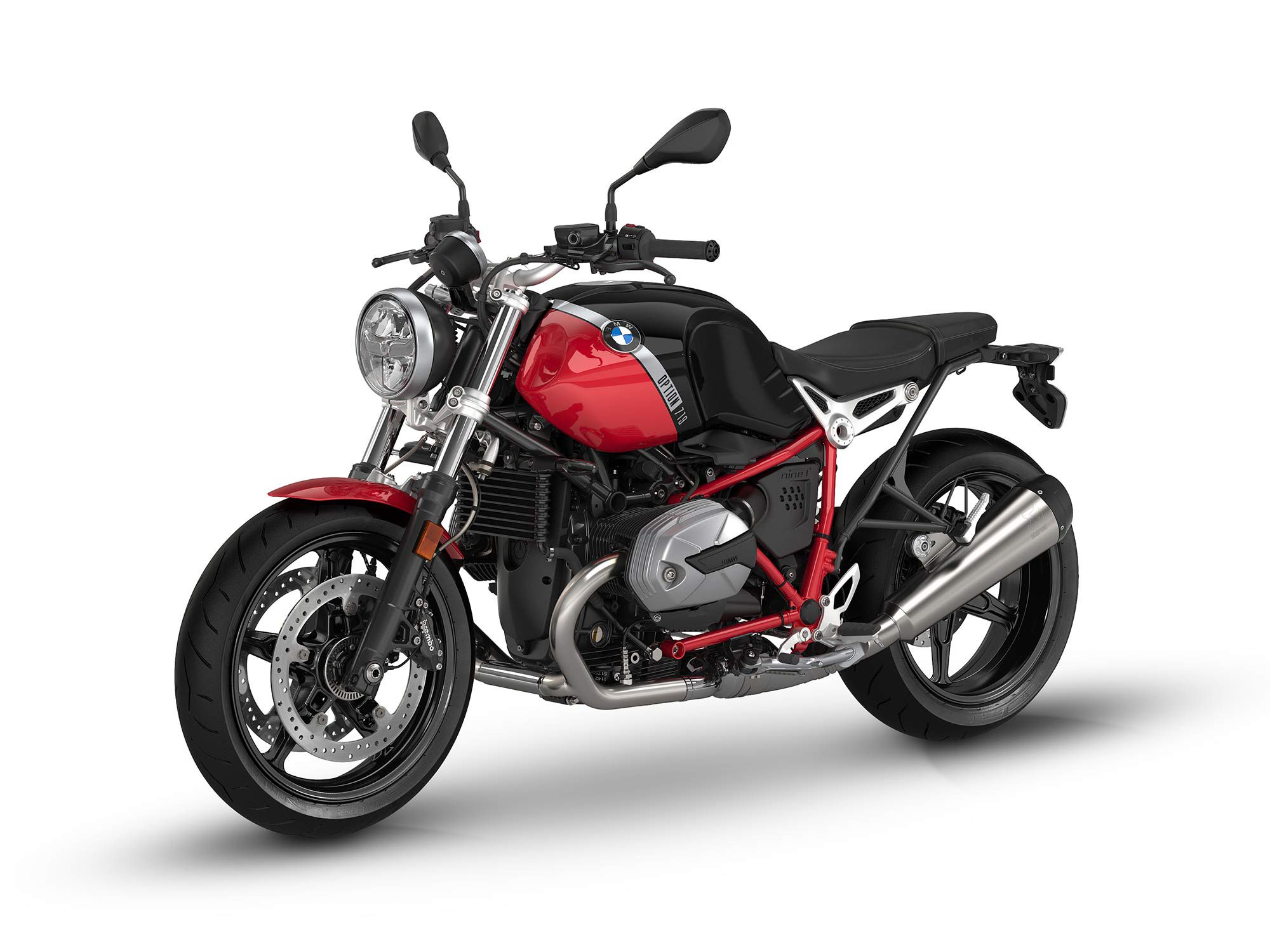
Ergonomics: Comfort and Utility
Both the R nineT and R nineT Pure have riding positions that function well for everyday riding. The conventional tubular handlebar has a nice rise and rearward bend that puts your torso in a standard upright position, and the footpegs are set low enough for plenty of legroom. While the seat offers plenty of fore/aft room for both rider and passenger, padding is firm enough that longer rides will be a bit of a chore.
Electronics
Part of the upgrades in 2021 to the R nineT and R nineT Pure include rider aid electronics, in the form of the making Road and Rain ride modes, ABS and ABS Pro (cornering ABS), and Dynamic Engine Braking Control all installed as standard equipment. The Ride Modes Pro option is also now available, which opens up Dynamic ride mode; this mode delays the intervention parameters for the traction control, ABS/ABS Pro, and Dynamic Engine Brake Control to allow the rider to explore his or her riding skills even further on dry tarmac. The headlight, taillight, and turn signals are all LED units, and a USB charging port for your smartphone or other personal electronics is included.
Warranty and Maintenance Coverage
The R nineT and R nineT Pure both come with BMW’s excellent three-year, 36,000-mile warranty, as well as its three-year, unlimited-mile roadside assistance.
Quality
Both the R nineT and its bare-bones partner R nineT Pure have excellent build quality, and all the available options and parts are just as top-shelf. BMW prides itself on the quality of its motorcycles, and the three-year, 36,000-mile warranty shows how confident it is of those products.
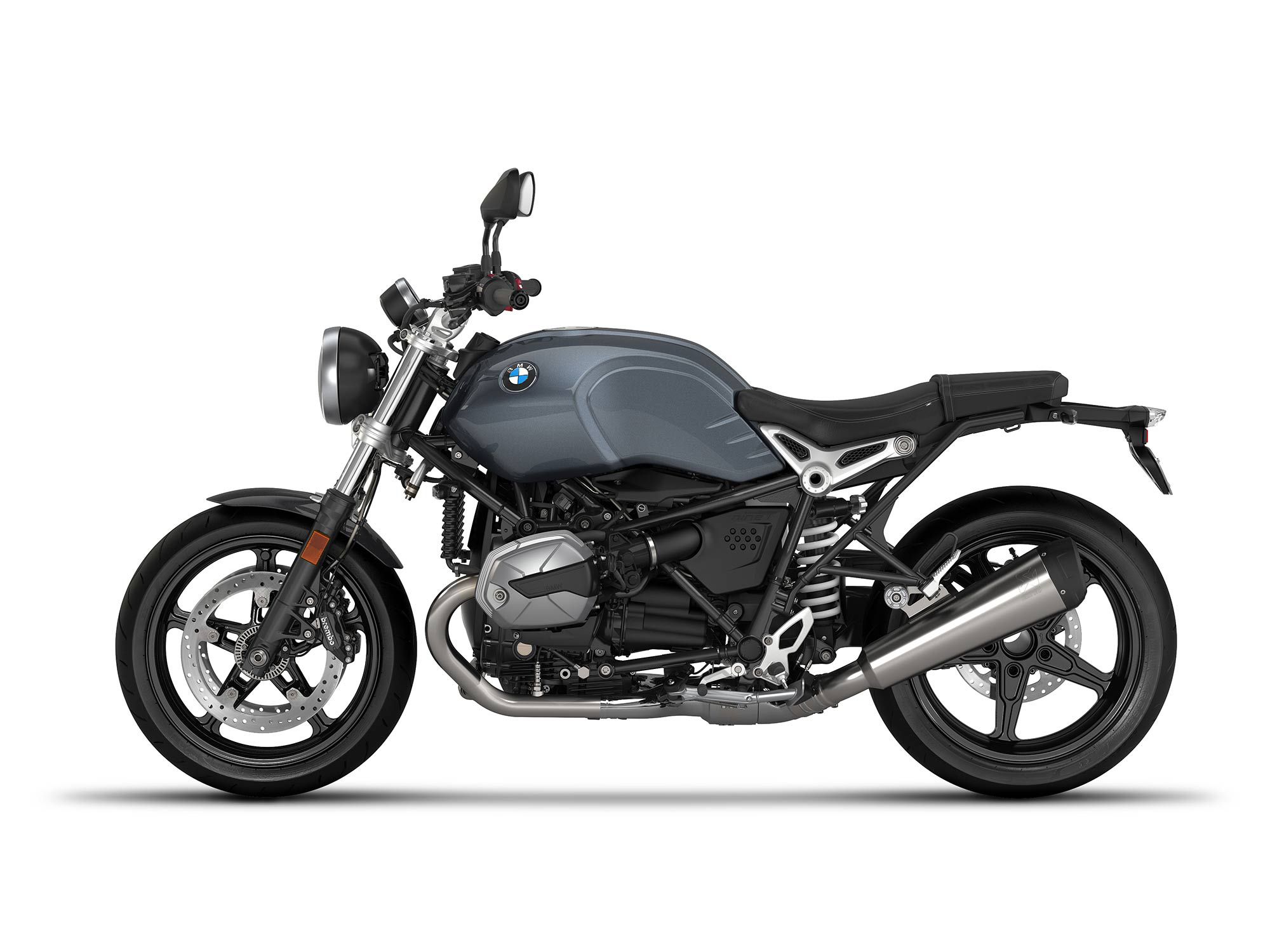
2022 BMW R nineT/Pure Claimed Specifications
| MSRP: | $15,945 (R nineT)/$10,995 (R nineT Pure) |
| Engine: | 1,170cc, DOHC, air/oil-cooled opposed twin; 8 valves |
| Bore x Stroke: | 101.0 x 73.0mm |
| Transmission/Final Drive: | 6-speed/shaft |
| Fuel Delivery: | Electronic fuel injection w/ 50mm throttle bodies |
| Clutch: | Dry, single disc; hydraulic operation |
| Engine Management/Ignition: | Ride by wire/TCI |
| Frame: | Triangular steel-tube chassis |
| Front Suspension: | 46mm Marzocchi inverted fork, nonadjustable, 4.7 in. travel/43mm Marzocchi conventional fork, nonadjustable; 4.7 in. travel (Pure) |
| Rear Suspension: | Marzocchi shock, spring preload and rebound damping adjustable; 4.7 in. travel |
| Front Brake: | 4-piston Brembo caliper, dual 320mm discs w/ ABS |
| Rear Brake: | 2-piston sliding-pin caliper, 264mm disc w/ ABS |
| Wheels, Front/Rear: | Spoked wheels/cast aluminum (Pure); 17 x 3.50 in. / 17 x 5.50 in. |
| Tires, Front/Rear: | 120/70ZR-17 / 180/55ZR-17 |
| Rake/Trail: | 26.8°/4.3 in. / 26.6°/4.1 in. (Pure) |
| Wheelbase: | 58.5 in./58.8 in. (Pure) |
| Ground Clearance: | 5.9 in. / N/A |
| Seat Height: | 31.7 in. |
| Fuel Capacity: | 4.5 gal. |
| Wet Weight: | 487 lb./483 lb. (Pure) |
| Contact: | bmwmotorcycles.com |
Source: MotorCyclistOnline.com
